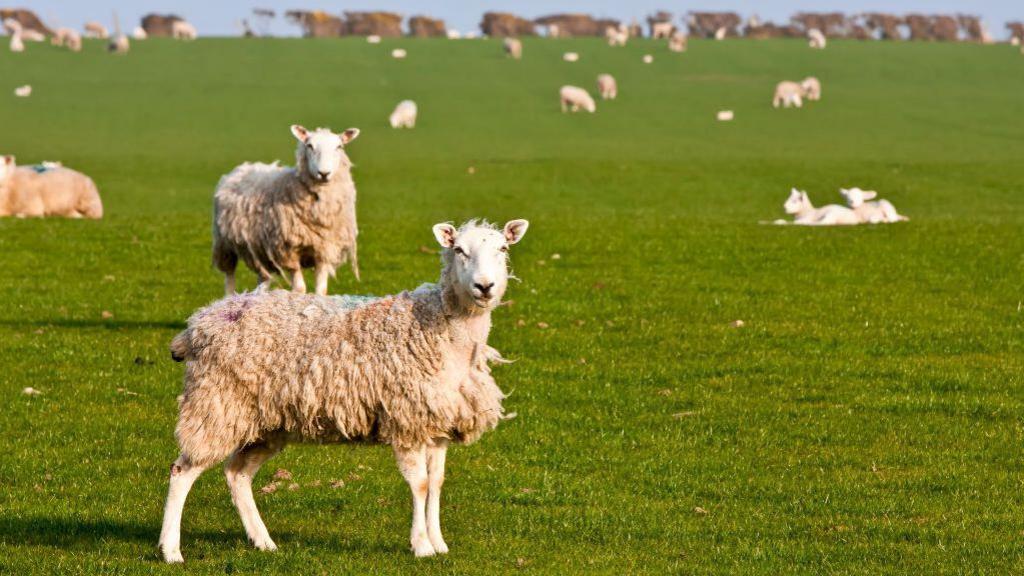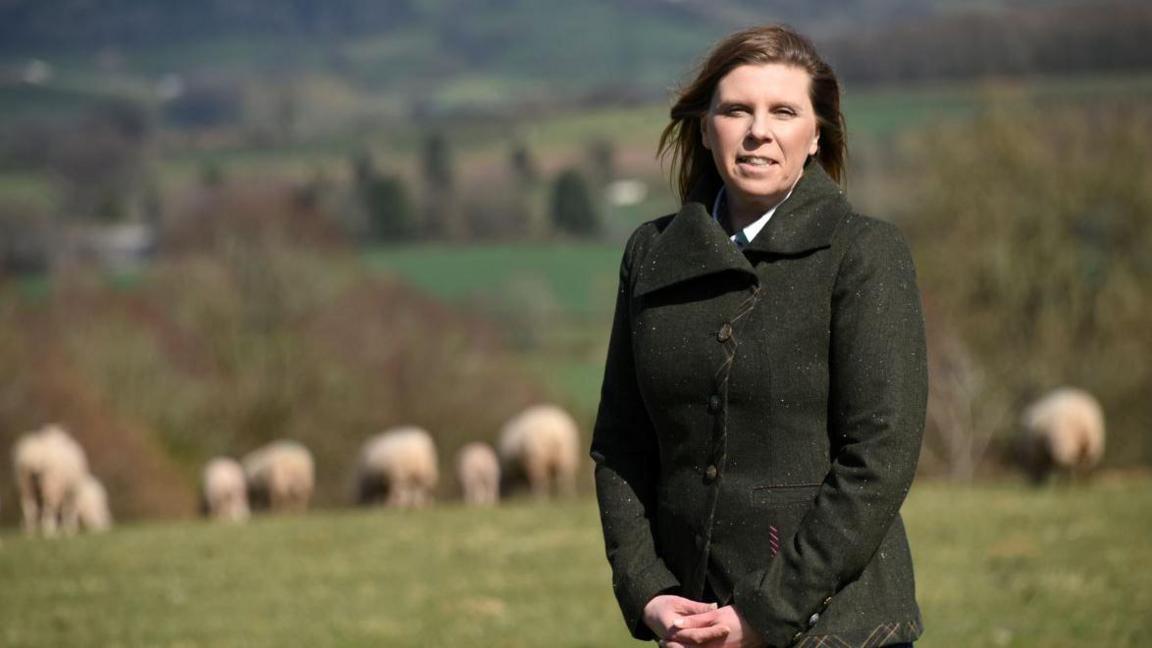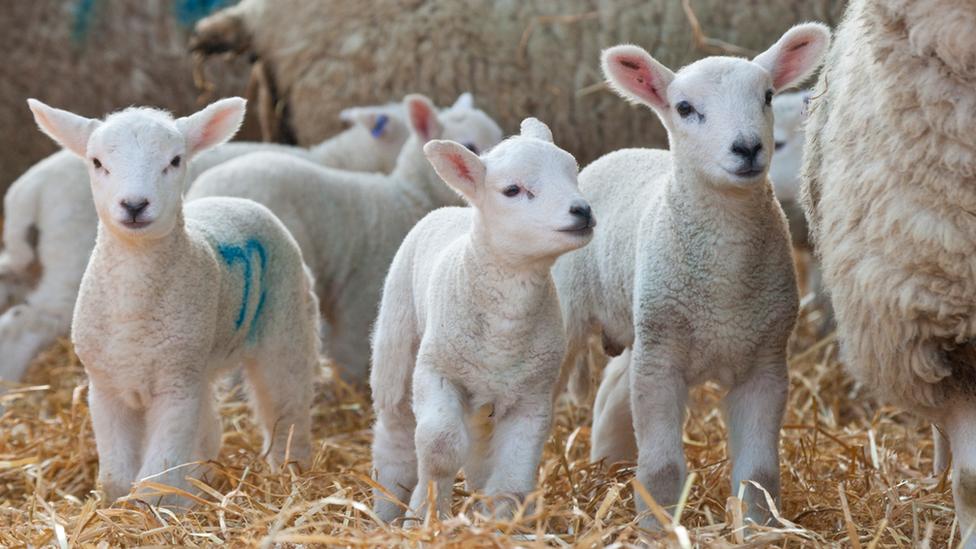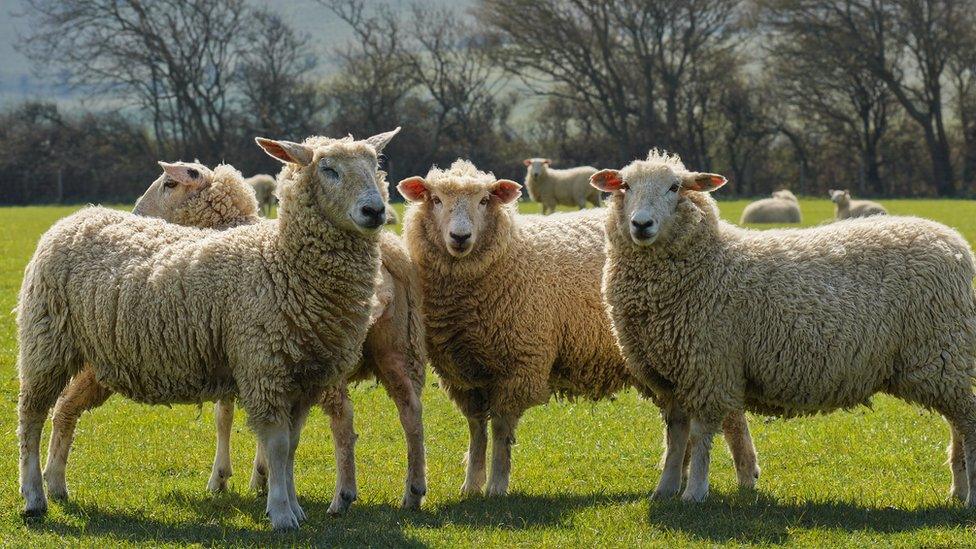Wool-d you believe Wales is losing sheep?

Sheep numbers in Wales have fallen from a high of almost 12m in the 1990s
- Published
If we believe the stereotypes, Wales has long been widely known for its rugby, choirs and sheep.
But the rugby is in the doldrums, the number of choirs is dwindling - and the sheep seem to have done a runner.
New figures show that where there were nearly 12m of them in the 1990s, the Welsh flock has fallen to just 8.75m in 2024.
This is almost their lowest in more than a decade, according to the Welsh government's latest agricultural survey, external, and chickens now outnumber sheep.
Warning of 'massive impact' of farm virus in Wales
- Published28 October 2024
Royal Welsh Show showcases nation's best livestock
- Published25 July 2024
Absolute ewe-nit! Huge newborn lamb shocks farmer
- Published20 March 2024
But the question is this: why have sheep undergone such a steep fall in a country where, remember, Welsh lamb is one of its most prized exports?
"The decline in sheep in Wales is definitely quite stark," said Royal Agricultural University senior animal welfare lecturer Dr Lisa Morgans.
"Why that is is multi-factorial."
She said there was "declining consumption of lamb and beef in the UK over the last couple of decades that has matched the decrease in people's cooking times: the average time per household is down to 15 minutes a day".
Leaving the European Union, Dr Morgans said, had also taken a toll.
"In the last few years we have had Brexit, leading to a slow decrease in subsidies for farms which has changed the business landscape," she said.
"That might have caused individual farmers to think about moving to different sectors.
"Then there was the Covid pandemic and the impact of that."
National Farmers' Union Cymru's national food and farming adviser Dafydd Jarrett said disease meant fewer lambs being born, and farmers were also keeping fewer animals because of rising costs.
Mr Jarrett said: "Fertiliser costs have gone up, feed costs have gone up.
"So the less mouths there are to feed the lower your costs, but that then affects your output."
Falling sheep numbers also meant fewer being slaughtered.
"Processers are quite worried they're not getting the amount they used to through their abattoirs," said Mr Jarrett.
"They are finding it difficult to source enough lambs for customers."
So what about chickens?
There are 11.8m of them in Wales, with 4.4m kept for laying eggs.
In England meanwhile, poultry numbers stand at 129m, external and in Scotland last year it was 11.7m., external
The difference in chicken and sheep numbers was down to demand, Mr Jarrett said.
"The main reason is the price, there is a price deferential," he said.
"Welsh lamb is targeting the higher end of the market but chicken is more of a commodity market."

Hybu Cig Cymru chairwoman Catherine Smith says breeding ewes are down since 2023
Hybu Cig Cymru (Meat Promotion Wales) chairwoman Catherine Smith said breeding ewes were down 1% since 2023, meaning fewer lambs would be born.
"Welsh flock numbers continue to trend lower than historical levels with current numbers still trending 8% below 2021 levels," she said.
She said Hybu Cig Cymru's September 2024 survey of farmers suggested optimism among farmers.
"The red meat sector in Wales is a key part of Wales’ foundational economy and ensuring critical mass in the sector is crucial," she said.
Related topics
- Published7 February 2024

- Published23 July 2024

- Published4 February 2024
